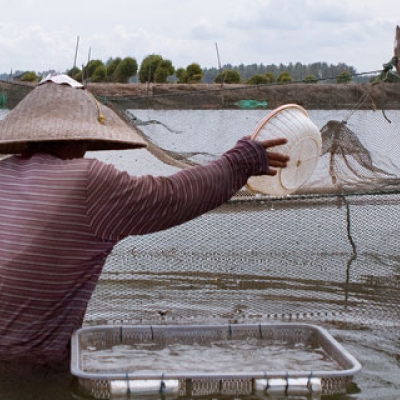
The venerable anchovy
By [node:field_contributor] / On August 13th, 2008
This week I was interviewed for The Food Programme which airs on radio in the UK. Its subject was the anchovy, a marine fish humble in size but prolific in life. Most of us are familiar with anchovies only as dark, finger-sized fillets in olive oil. Their piquant flavour gives zest to hundreds of dishes from pizza to stuffed peppers to lamb chops. What is less well known is that their popularity as a cooking ingredient extends back thousands of years.



